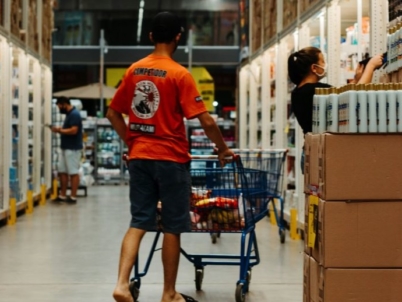-
Women Leading the Way in the UK Material Handling Industry - December 12, 2025
-
LiftEx 2025 live from Liverpool - December 11, 2025
-
DATA ANALYSIS – THE FOUNDATION OF EVERY PEAK SEASON - December 5, 2025
-
Creative education specialists Creative Hut give 3PL full marks for onboarding excellence - December 5, 2025
-
Unlimited Industries raises $12M to build the AI construction company that will power America’s future - December 4, 2025
-
Scottish Leather Group gets full-support solution from Rushlift - December 4, 2025
-
Etaily lands strategic investment from Japan’s SMBC – bringing total funding to $24M for Social Commerce enablement platform - December 4, 2025
-
Winners lift their LEEA Awards and raise the industry - December 4, 2025
-
Prism eLogistics and Brand Angels Partnership Gives Brands the Full Package - December 3, 2025
-
New data shows Tesla in danger of losing its way as European consideration to buy Chinese cars jumps 16% in 12 months - December 3, 2025
Driverless forklifts are the perfect part handling solution for the automotive industry, says Jason Zhang, VisionNav Robotics’ Head of Sales – Europe

The automotive industry was an early adopter of automated production technology and for several decades robots busily carrying out welding, assembly, painting and part transfer tasks, have been a feature of car plants the world over.
With the development of ever-more dexterous robotic technology capable of undertaking the jobs that had previously been performed by human hands, the use of automation is only likely to grow across the sector as manufacturers seek greater control over the total production process —not just individual workstations.
But the ultra-efficient production regime manufacturers strive for is dependent on an effective supply chain and, with OEM components from steering wheels to infotainment units delivered line-side on a just-in-time basis, it is essential that intralogistics processes maintain a high level of consistency to ensure that the right part gets to the right location on time, every time.
The handling of car parts is often one of the most dangerous parts of a vehicle assembly line for human employees so, given the automotive sector’s willingness to embrace automation it is perhaps a little surprising that, in many cases, the vital role of delivering component parts from the warehouse to the production line is entrusted to traditional human-operated forklift trucks or tow tractors.
Accidents involving materials handling equipment – such as forklifts colliding with pedestrian workers, the building or production machinery – remain a common occurrence in many industry sectors and, in the overwhelming majority of cases, responsibility for the mishap is deemed to lie with the truck operator.
Apart from any human cost arising from injured assembly line workers, forklift accidents can have an extremely detrimental impact on production flow rates – particularly if assembly stations or the parts that the forklift was transporting are damaged.
But driverless forklift truck technology greatly reduces the risk of trucks causing damage to goods or people. Operator-free forklifts undertake every type of task that would be expected of a traditional manually operated forklift – including vehicle loading and unloading, pallet put-away and retrieval in both standard and very narrow aisle racking configurations, as well as pallet and stillage movements throughout the warehouse and assembly facility.
VisionNav’s operator-free forklifts and tow tractors use a vehicle-mounted camera to sense the environment in which the vehicle is operating. Information concerning the structural design and lay-out of the facility where trucks are deployed is stored as off-line maps which the visual navigation system matches with real time images received from the camera to navigate the forklifts efficiently and safely around the building.
VisionNav driverless trucks are in operation at a number of automotive component manufacturing facilities. For example, a China-based supplier of gearboxes and transmitters deploys driverless trucks to block stack cages of finished goods within its outbound goods area prior to their delivery to the manufacturer’s site. Meanwhile a manufacturer of car door panels – also based in the Far East – relies on VisionNav’s driverless forklift system to pick and stack some 700 cages containing panels prior to being loaded onto delivery vehicles every day.
The technology at the heart of VisionNav’s range of driverless robots is quick and easy to install and brings a rapid return on investment. The highly flexible technology allows driverless industrial trucks to be adopted with minimal disruption to a site’s existing intralogistics process and, typically, ROI is achieved after a period of 18-24 months.
Driver-free forklifts deliver such a rapid return on investment because not only do they offer improved production performance and reduced accident rates, they also allow the increasingly costly forklift operator’s wages to be removed from the user’s overheads. And, with the forklift driver often representing the biggest cost when it comes to running a lift truck fleet, for many companies operating in the automotive space and other sectors, this is a considerable incentive to go driver-free in itself.
VisionNav Robotics range of fully automated, vision-guided forklift trucks is now available across Europe and includes driverless counterbalanced trucks, reach trucks, stackers and tow tractors.

































